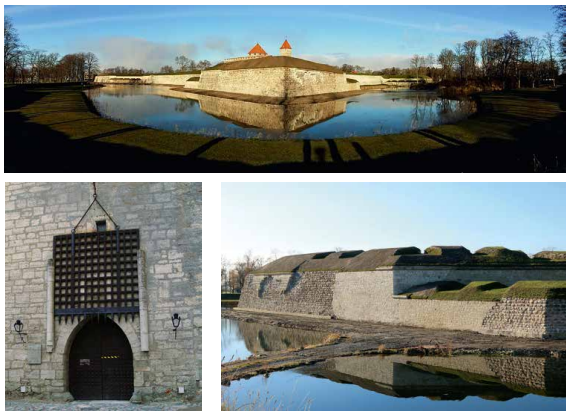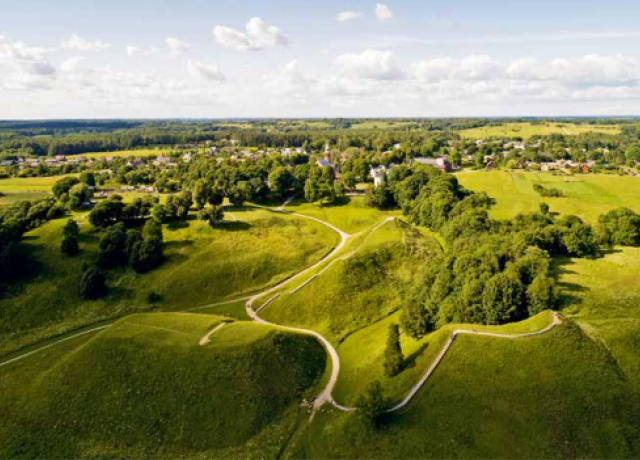Visiting Neighbours: A Cross-Collaboration Project in the Baltics
Visiting Neighbours: A Cross-Collaboration Project in the Baltics
Celebrating universal cultural values of Europe, the theme of heritage sharing inspired numerous cross-broader initiatives in 2018. One of them is a “Visiting Neighbours” project developed by Estonia, Latvia, and Lithuania, which provided a new context for exploring the heritage of the three countries.
Carried out throughout 2018, the project was one of the highlights of heritage celebrations within European Heritage Days, European Year of Cultural Heritage 2018, and the centenary of independence of the three countries. Encouraging citizens to learn more about the heritage of their neighbours, it represents a magnificent celebration of the common history and culture.
The idea was first born on a cross-border heritage seminar in 2017. Soon afterwards, each of the participating countries suggested 33 heritage landmarks that the citizens from the neighbouring countries should visit. The project helped increase the visibility of the sites and evoke a greater interest in uncovering their unique stories.
The Collaboration
.png)
The idea of cross-promoting heritage of the neighbouring countries was initiated by European Heritage Days organisers and several steps were taken to make it possible. The most important one is a multi-venue seminar that was organised with a goal of helping develop and implement the idea. The seminar took place between 20 and 23 August at three heritage sites, each of which inspired a specific theme of discussions.
Heritage conservation in shrinking regions in Viljandi, Estonia
The first part of the seminar put the focus on the strategies to reconnect people to the places they have left and encourage people from other places become regular guests or settle. One of the main conclusions of the day was that attracting people to territories that should be revitalized requires additional investments in creating open and pleasant public spaces.
From endangered to success story in Rundāle, Latvia
The venue chosen for the second part of the seminar was the historic castle of Ernst Johann Biron, who later became the Duke of Courland. As a place that received the diploma for dedicated service from Europa Nostra in 2002, the Rundale Palace is important not only as school for restorers, but also for specialists from Rundale who collected heritage of sacral art that was neglected during Soviet period.
The rich history of Rundale Palace made it a perfect setting to discuss the ways to restore nationally significant sites. The main conclusion of the day was that every site needs a special attitude that should be developed based on knowledge, awareness of its values, and creativity. During the seminar, the participants also gave similar examples from all the three countries. These include: Pedvāle open air museum, Abgunste manor, Preiļi Castle in Latvia, Rietavas town in Lithuania, Seaplane harbour, Rotermann, Grand Hotel Viljandi, and Tartu railway station in Estonia, which were presented during seminar.
Protection of archaeological heritage: success stories and challenges in Kernave, Lithuania
The closing day of the seminar highlighted the theme of protection of archaeological heritage, asking the question: How to engage people in protecting heritage they mostly do not see and they do not have direct connection?
The participants discussed the possible answers, giving examples from their own countries and suggesting strategies that could make difference for local heritage in future.
General Conclusions and Project Results

The inspiring settings and themes of the seminar resulted in several important conclusions regarding the heritage protection and preservation in Estonia, Latvia, and Lithuania. The participants recognised the crucial need for a more active communication among national heritage institutions, especially middle-level management and experts.
Another important conclusion is that the cross-border promotion of heritage requires a development of better heritage communication to public – heritage owners, municipalities, enthusiasts. This is especially important with respect to some case studies presented during the seminar that showed how greatly the owners rely on national authorities responsible for heritage preservation.
In addition to encouraging a great collaboration between the coordinators, the seminar also resulted in a publication that illustrates heritage sites that are not only nationally important cultural monuments, but also testimonies of European cultural, artistic, political, social, scientific, technological or industrial movements and their variations.
The “Visiting Neighbours” publication showcases 100 most significant cultural monuments of three Baltic States. It includes 33 sites from each country together with a common heritage site that commemorates The Baltic Way, a 600 km long human chain from Tallinn to Vilnius that was created on 23 of August 1989. Most of the 33 Latvian sites in the publication have taken part in European Heritage days, with about a third of them working to reveal some aspects connected to the national theme every year.
The objective of publication is to raise awareness about unique and common aspects of heritage of each country, as well as to encourage the wider public to visit heritage sites at home and in neighbouring countries. By fostering public awareness of heritage sites, the organisers hope to engage citizens in revelling heritage around them and forming strong heritage communities that participate in heritage governance process.
The “Visiting Neighbours” publication is available on this link: https://goo.gl/Wdq6db
Photos taken from the Visiting Neighbous publication.
